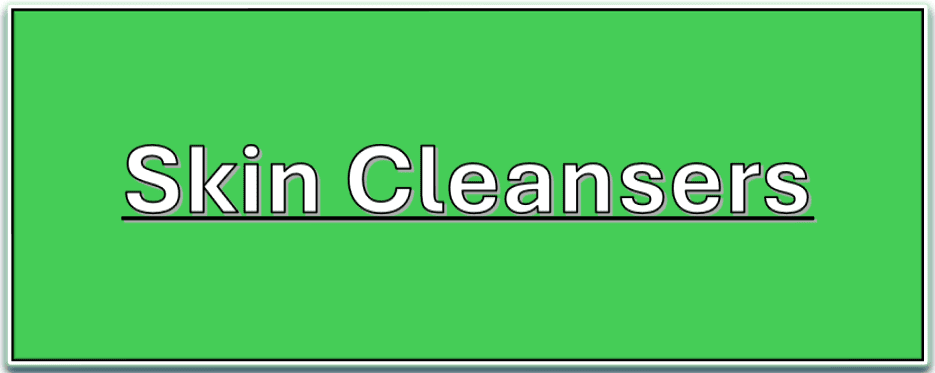Aging is a natural process, but the desire to maintain youthful skin has led to the booming market of antiaging products. Aging results in subtle and not-so-subtle changes in the appearance of the skin. Many of the effects seen on the skin with aging are probably an indirect result of the decrease in the blood supply to the dermis. The number of sebaceous ducts and the level of secretion from them also decreases, however, many of the remaining ducts increase in size. Manifestations of aging that are of primary concern to the cosmetic chemist are wrinkles. These lines, which become more pronounced with age, especially on the face, are caused by a shrinking of the superficial muscles, which have their points of insertion in the dermis. The facial expression muscles are the first areas to change with age.
They also develop the deepest wrinkles. As they lose superficial mass, thinning of the epidermis and a loss of collagen and elastin are apparent. These all contribute to the visible process called aging. As yet, it has not been possible to affect this frank, deep cellular ageing. One reason is that there is nothing histological to differentiate the cellular structure of a wrinkle from that of a non-wrinkled epidermal area. Advances are continually being made to show improvements in the aging of photo-damaged skin, due to retinoid and retinoid-like effects, more recently demonstrated by a-hydroxy acids and related compounds. Several natural physiological vitamin A or retinoid effects that are known to be ongoing in the dermis are dermal development, collagen synthesis, hyaluronic acid synthesis, DNA content and epidermal protein expression. Since these factors are, in part, controlled by vitamin A and its derivatives in healthy skin, it has proven worthwhile to seek profound effects such as those demonstrated by topical treatment of retinoic acid. Achieving a retinoid effect is not possible by simply adding vitamin A or another retinoid to a cosmetic formula. Following topical application, the effective drug must be available to the dermis and epidermis, without untoward side effects.
Recent work with the hairless mouse model has correlated a dose-response to increasing levels of retinyl palmitate in a suitable cosmetic preparation. This response from topical treatment resulted in an increase in protein and collagen synthesis, and in DNA content, together with a thickening of the epidermis. Prior work with a topically applied retinoid has shown accelerated dermal repair to UV-damaged dermis, due to increasing regeneration of connective tissue. Emerging work has shown quantifiable effects on human photodamaged skin, and significant biochemical changes in the hairless mouse model, due to topical application of a common cosmetic retinoid. This, coupled with the ability to increase cell turnover from use of a cosmetic product, the reduction of superficial facial lines through new and improved materials and mechanisms, and the ‘plumping’ of the epidermis by occlusive or humectant agents can, in theory, be combined to give excellent visual anti-aging results. Damage that can manifest itself as aging, stems from the effect on the elastic fibers that provide smoothness and suppleness. Recently, a-hydroxy acids, primarily lactic and glycolic, have entered the marketplace in many skin-care preparations.
A growing problem is whether or not retinoid-like materials are drugs. In the US, products containing retinoic acid are classified as drugs and are only available on prescription and allowed to be used under the supervision of a physician. At present, such products are cleared for use only in the treatment of acne but are being mis-prescribed by many physicians for the treatment of photoaging and its associated dermal damage. They are not without side effects, including significant levels of irritation in some patients.
Formulation of Antiaging Products
The formulation of antiaging products is crucial for their efficacy. Here are some key factors to consider:
- Delivery System
- Stability of Ingredients
- Compatibility of Ingredients
- Absorption and Penetration
- Texture and Feel
Delivery System
The delivery system determines how well the active ingredients penetrate the skin. Liposomes, nanoparticles, and encapsulation are some of the advanced delivery systems used in modern formulations.
Stability of Ingredients
The stability of ingredients ensures that they remain effective throughout the product’s shelf life. Antioxidants, for example, can degrade when exposed to air and light, so they need to be formulated in a way that preserves their potency.
Compatibility of Ingredients
Compatibility of ingredients is essential to ensure that they work well together without causing irritation or reducing each other’s efficacy. Some ingredients, like retinoids and AHAs, can be irritating when used together.
Absorption and Penetration
The absorption and penetration of active ingredients depend on the formulation. Ingredients need to be in a form that allows them to penetrate the skin’s barrier and reach the deeper layers.
Texture and Feel
The texture and feel of a product affect user experience and compliance. Products should be easy to apply, non-greasy, and comfortable on the skin.
Active Materials in Antiaging Products
Active materials are the ingredients that have been proven to have a specific effect on the skin. Here are some of the most effective ones:
- Collagen Boosters
- Hydrating Agents
- Skin Brighteners
- Anti-inflammatory Agents
- Sun Protection Agents
Collagen Boosters
Collagen boosters, such as retinoids, peptides, and growth factors, stimulate collagen production, which helps maintain skin elasticity and firmness.
Hydrating Agents
Hydrating agents, like hyaluronic acid and glycerin, attract and retain moisture in the skin, keeping it plump and hydrated.
Skin Brighteners
Skin brighteners, including vitamin C, niacinamide, and licorice extract, help reduce hyperpigmentation and even out skin tone.
Anti-inflammatory Agents
Anti-inflammatory agents, such as green tea extract and aloe vera, soothe the skin and reduce redness and irritation.
Sun Protection Agents
Sun protection agents, such as zinc oxide and titanium dioxide, protect the skin from UV damage and prevent premature aging.
Key Ingredients in Antiaging Products
The efficacy of antiaging products largely depends on the ingredients they contain. Here are some of the most important ones:
- Retinoids
- Hyaluronic Acid
- Vitamin C
- Peptides
- Alpha Hydroxy Acids (AHAs)
- Beta Hydroxy Acids (BHAs)
- Niacinamide
- Antioxidants
Retinoids
Retinoids, including retinol, are derivatives of vitamin A and are highly effective in promoting cell turnover and collagen production. They can reduce fine lines, wrinkles, and hyperpigmentation.
Hyaluronic Acid
Hyaluronic acid is a powerful humectant that can hold up to 1,000 times its weight in water, making it an excellent hydrating agent. It plumps the skin and reduces the appearance of fine lines.
Vitamin C
Vitamin C is an antioxidant that helps protect the skin from free radical damage and boosts collagen production. It can brighten the skin and reduce signs of aging.
Peptides
Peptides are short chains of amino acids that signal the skin to produce more collagen and elastin. They help improve skin texture and firmness.
Alpha Hydroxy Acids (AHAs)
AHAs, such as glycolic acid and lactic acid, are chemical exfoliants that remove dead skin cells and promote cell turnover. They can improve skin texture and reduce fine lines and wrinkles.
Beta Hydroxy Acids (BHAs)
BHAs, such as salicylic acid, are oil-soluble exfoliants that penetrate the pores and help clear acne and improve skin texture. They are particularly beneficial for oily and acne-prone skin.
Niacinamide
Niacinamide, also known as vitamin B3, is a versatile ingredient that can improve the skin’s barrier function, reduce inflammation, and even out skin tone.
Antioxidants
Antioxidants, such as green tea extract, resveratrol, and coenzyme Q10, help protect the skin from oxidative stress caused by free radicals. They can prevent premature aging and promote healthy skin.
Types of Antiaging Products
Antiaging products come in various forms, each designed to target different signs of aging. Here are the most common types:
- Moisturizers
- Serums
- Eye Creams
- Facial Masks
- Exfoliants
- Sunscreens
Moisturizers
Moisturizers are essential for maintaining hydrated skin, which can help reduce the appearance of fine lines and wrinkles. They often contain emollients and humectants that work to keep the skin soft and supple.
Serums
Serums are concentrated formulations that deliver active ingredients directly to the skin. They are typically lightweight and can penetrate deeper layers of the skin compared to other products.
Eye Creams
Eye creams are specifically formulated to address the delicate skin around the eyes. They often target puffiness, dark circles, and fine lines.
Facial Masks
Facial masks provide intensive treatment and are usually left on the skin for a set period. They can be hydrating, exfoliating, or antiaging, depending on their ingredients.
Exfoliants
Exfoliants remove dead skin cells, promoting cell turnover and revealing fresher, younger-looking skin. They can be physical (scrubs) or chemical (acids).
Sunscreens
Sun protection is crucial in any antiaging regimen. Sunscreens protect the skin from UV damage, which is a major cause of premature aging.
References:
- American Academy of Dermatology. (2020). Skin care and aging.
- Baumann, L. (2007). Skin ageing and its treatment. The Journal of Pathology, 211(2), 241-251.
- Mukherjee, S., Date, A., Patravale, V., Korting, H. C., Roeder, A., & Weindl, G. (2006). Retinoids in the treatment of skin aging: an overview of clinical efficacy and safety. Clinical Interventions in Aging, 1(4), 327.
- Pandel, R., Poljšak, B., Godic, A., & Dahmane, R. (2013). Skin photoaging and the role of antioxidants in its prevention. ISRN Dermatology, 2013.
- Toma, S., & Tarsi, R. (2019). Anti-aging cosmetics: Review of the physiopathology, clinical evaluation, and formulations. Dermatologic Therapy, 32(4), e12854.
- Ryan, J.C. (1966) The microcirculation of the skin in old age. Gerontol. Clin. 8 327-337.
- Plewig, G. and Kligman, A.M. (1972) Follikulare pusteln im kaliumjodid-epicutantest. Arch. Dermatol. Forsch.242137-152.
- Gilchrest, B.A. (1991) Physiology and Pathophysiology of Ageing Skin in Physiology, Biochemistry and Molecular Biology of the Skin. Goldsmith, L.A. (Ed.). Oxford University Press, pp. 1425-1444.
- Wright, E.T. and Shellow, W.V. (1973) The histopathology of wrinkles. J. Soc. Cosmet. Chem. 24 81-85.
- Counts, D.F. et al. (1988) The effect of retinyl palmitate on skin composition and morphometry. J. Soc. Cosmet. Chem. 39 235-240.
- Williams, D.F., Schmitt, W.H., Chemistry and Technology of the Cosmetics and Toiletries Industry, 1996
- Kligman, L. (1986) Effects of all-trans-retinoic acid on the dermis of hairless mice. J. Am. Acad. Dermatol.15 779-785.
- Braverman, I.M. and Fonferko, E. (1982) Studies in cutaneous ageing I: the elastic fiber network. J. Invest. Dermatol. 78 434–443.
- Smith, J. G. et al. (1962) Alterations in human dermal connective tissue with age and chronic sun damage. J. Invest. DermatoI. 39 347-350.
- Kligman, L.H. et al. (1983) Sunscreens promote repair of UV radiation induced dermal damage. J. Invest. Dermatol.8194–102.
- Smith, W.P. (1994) Hydroxy acids and skin aging. Cosmet. Toilet. 109 41-48.
- Abamba, G. (1993) Skin preparation of Poucher’s Perfumery, Cosmetics and Soaps. Volume 3, Poucher, W.A. and Butler, H. (Eds). pp. 335-392.
- McNamara, S.H. (1987) Performance claims for skin care cosmetics. Cosmet. Toilet. 102 81-88.







